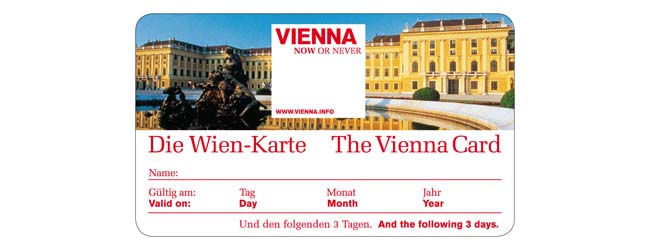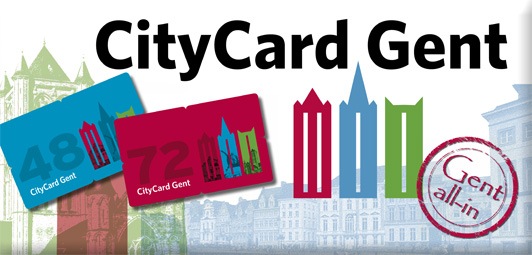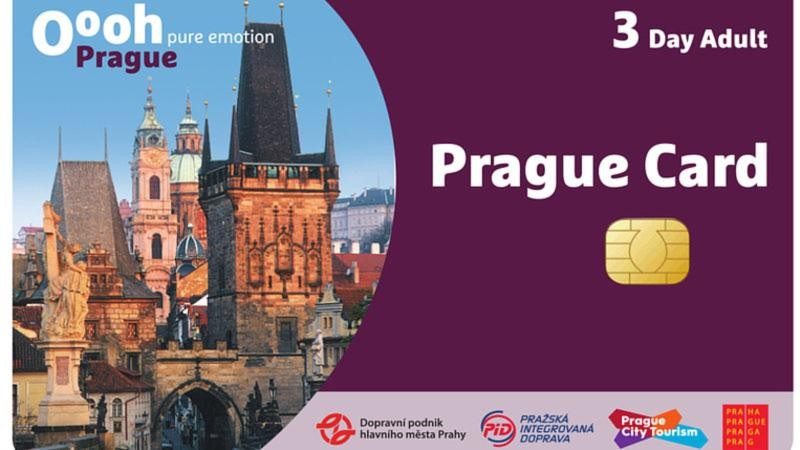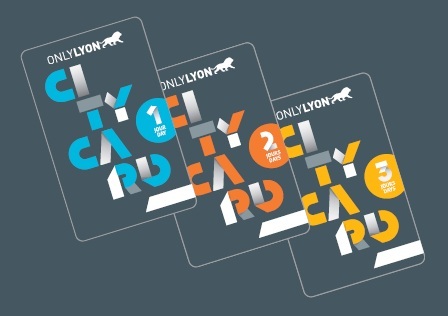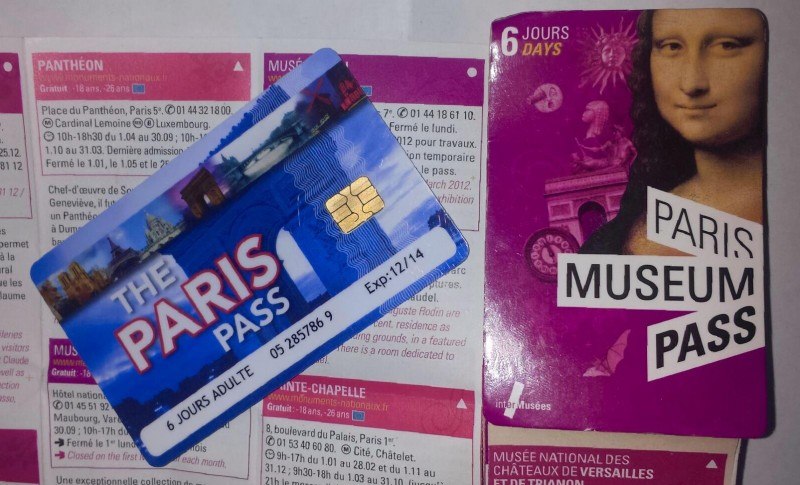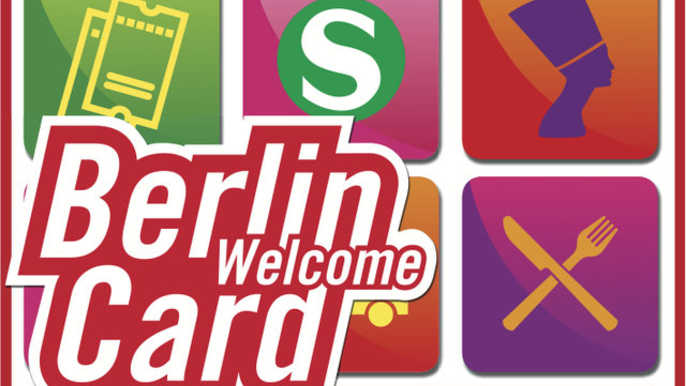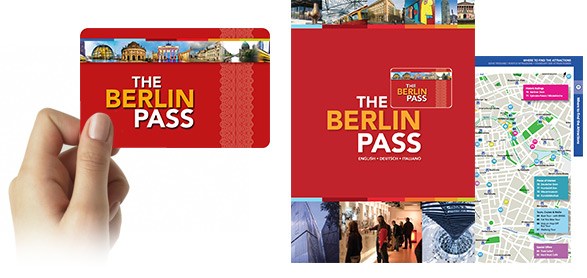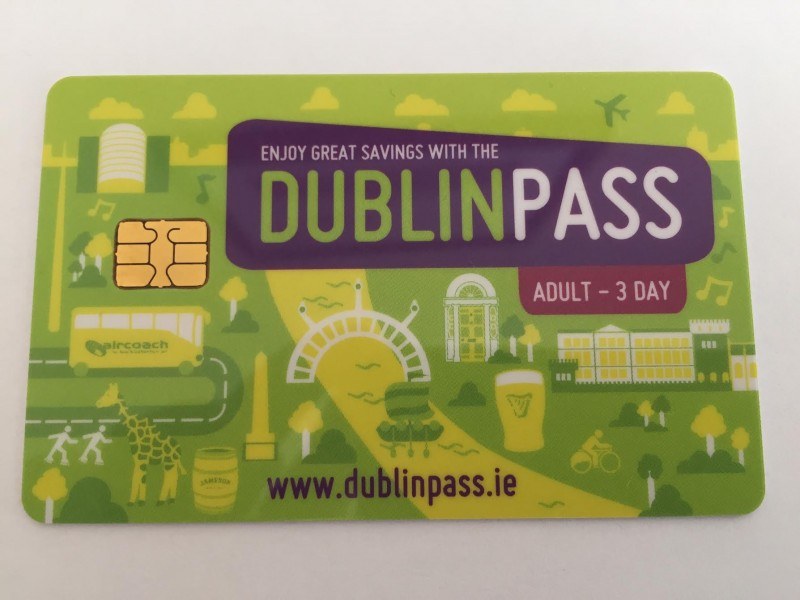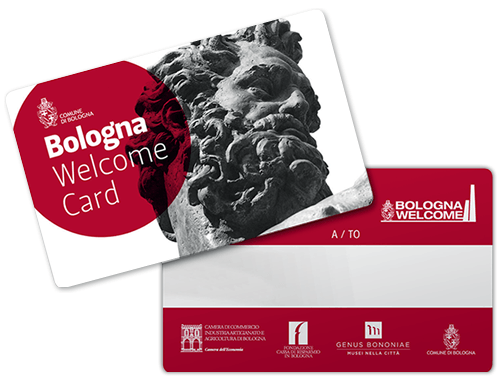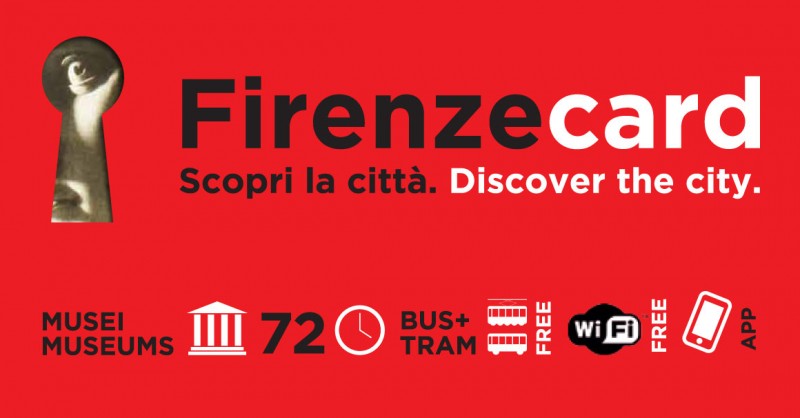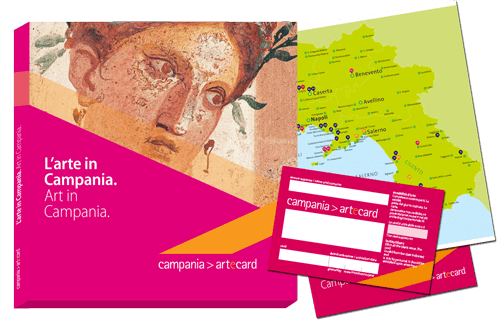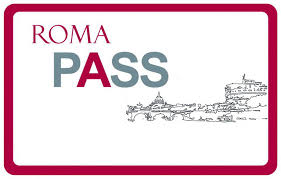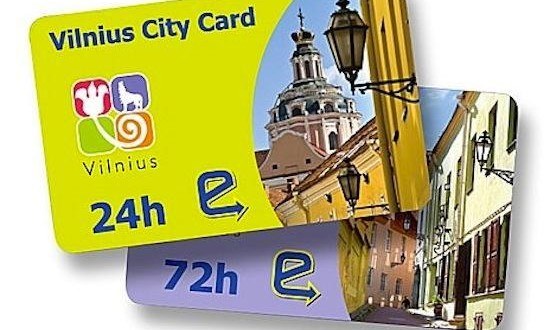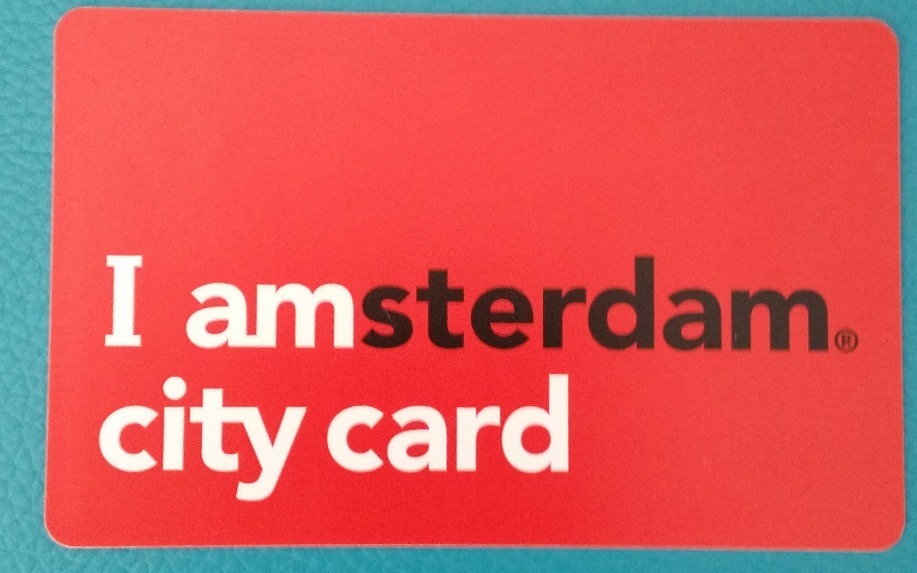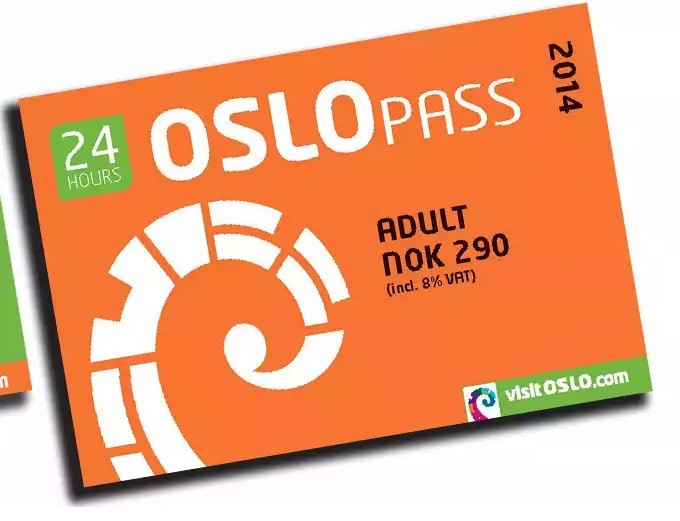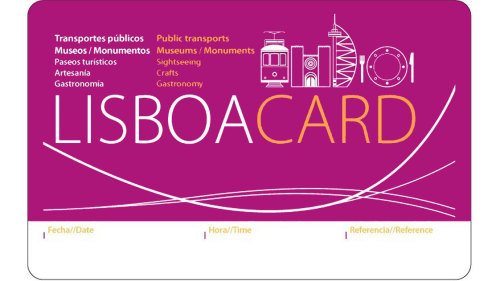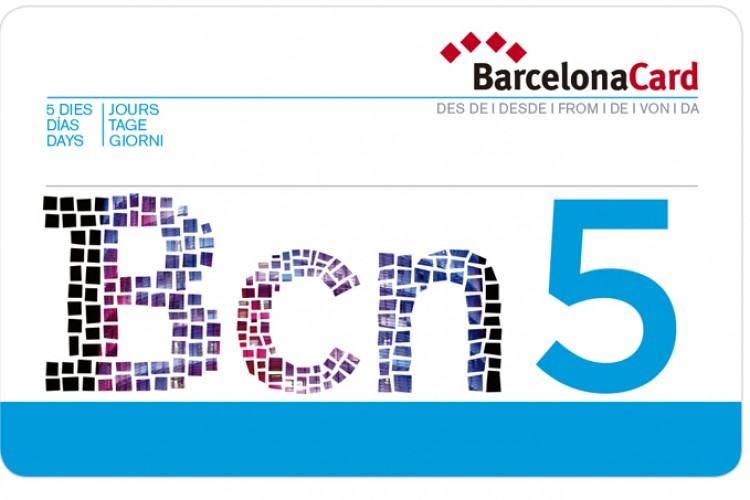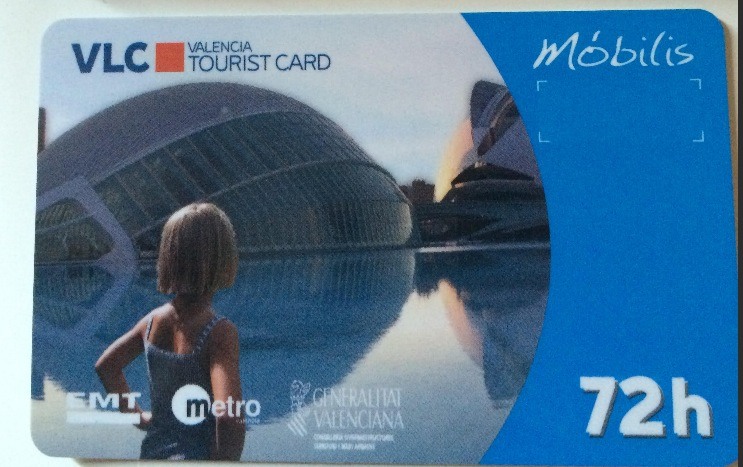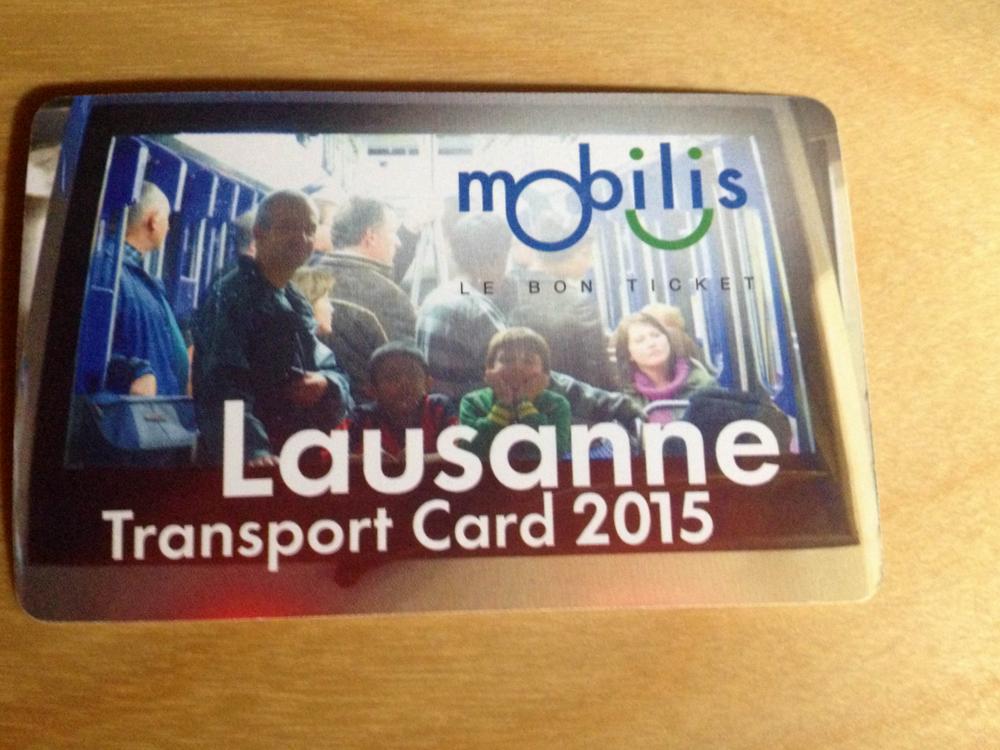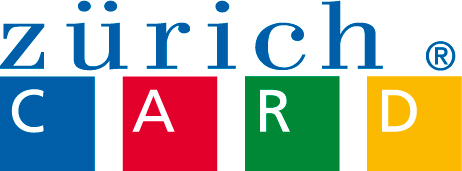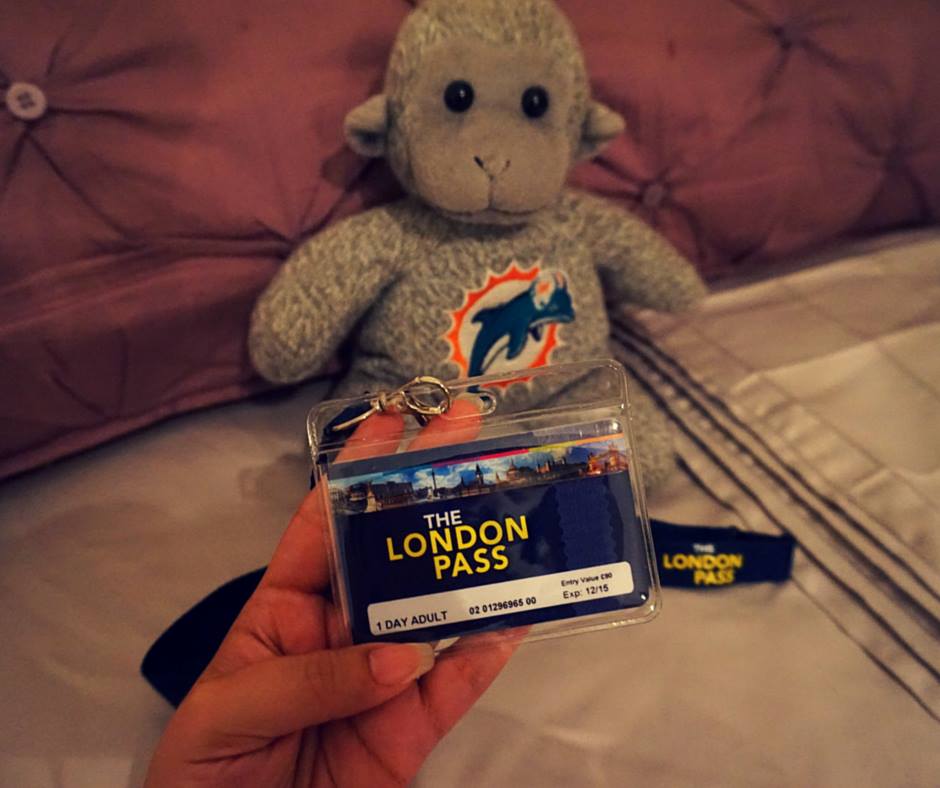Whether you’re taking in one country or the whole continent, most European cities have a special card that offers some special benefits to tourists. Which ones are worth your money, though? Which ones should you pass on? Plan your trip through Europe the smart way!
Update: there’s a newer post (updated February 2016) offering even more reviews than seen here. Check it out.
Three quick notes before we get started here:
- Some cards were received for free from the relevant tourist authorities. Receiving something for free did not (and does not) factor into their rating – I’m looking at the value received for the price and effort to use.
- Because Europe has a lot of city cards, I put the call out to friends and fellow bloggers. Quite a few responded with great reviews and details – thanks a bunch everyone! If you see someone’s name and website under a review, check out their website for more awesome travel stories and adventures (they’re all set to open in a new window / tab)
- Cards are rated 1 to 5 globes based on their value and usefulness (five being the best).
Quick jumps:
What is a city card?
Austria
Vienna
Belgium
Ghent
Czech Republic
Prague
France
Lyon
Marseille
Paris
Germany
Berlin
Ireland
Dublin
Italy
Bologna
Florence
Naples
Palermo
Rome
Lithuania
Vilnius
Netherlands
Amsterdam
Norway
Oslo
Portugal
Lisbon
Spain
Barcelona
Lloret de Mar
Valencia
Switzerland
Lausanne
Zurich
United Kingdom
London
What is a city card?
I’m so glad you asked. A city card is a program typically run by the city’s tourism authority which typically offers free or discounted access to the city’s public transportation and attractions. Some programs are run by private companies, and I’ve tried to note the origin of the program where I could. Each program is run and priced a little differently, however, meaning it’s important to know what’s covered and what isn’t.
Austria
Vienna
On the cheaper side of European city cards is Vienna’s offering, which runs 18.90 € for the 48-hour card and 21.90 € for the 72-hour card. The card covers unlimited public transportation and discounts (only discounts) to dozens of attractions. These discounts aren’t particularly substantial – usually 10%-20% – but run the gamut on everything from food to museums to shows to accessing Austrian Airline’s business-class lounge. Over 210 partners are listed in the guidebook you’ll receive, which is itself worth a few euros.
The value comes mainly from accessing public transportation, since it’s only about five euros more than the three-day public transportation pass. Without trying too hard you’ll accrue enough small discounts to make it worth your while. It’s far from the all-inclusive card found in other cities, but it’s a worthwhile deal that’s easy to pick up.
I’ll note there are two other cards available for Vienna, which I can’t rate since I didn’t try them firsthand and didn’t thoroughly research them:
- The Vienna Pass (viennapass.com), which offers free admission to about 60 of Vienna’s well-known and mainstream attractions along with the Hop on, Hop off buses that only stop at tourist attractions. They’re pricier: 2 days is 69 €, 3 days is 84 €, and 6 days is 99 €. These don’t include public transportation, either – add 13 €, 17 €, and 33 €, respectively.
- The Niederösterreich Card (niederoesterreich-card.at) actually covers an eye-watering 331 different attractions, scattered across Austria. For 55 €, the card gets you free admission to places across the country, including dozens in Vienna and the nearby areas. If you’ll be traveling around the country, this is likely to be a great deal even though it doesn’t cover any public transportation.
Belgium
Ghent
From Sofie Couwenbergh at wonderfulwanderings.com
On my last trip to Ghent I used the Ghent Citycard. I’d mostly recommend it if you’re staying in Ghent for more than one day as it covers a lot of attractions and is valid for 48 or 72 hours. It might seem a bit pricey at €30 for the 48 hour card, but if you know you can use it at over 20 sights AND on public transportation, it’s really a good investment.
I think it’s a shame that the “shortest” option is 48 hours. You can do a hell of a lot with it so if you come for two days it can basically cover everything you might want to do, but it’s rather expensive for one day and you might not get your money out of it in that case.
Czech Republic
Prague
Coming in 2-day (46€ ), 3-day (56€ ), and 4-day (65€ ) varieties, the Prague card covers public transportation and offers free admission to many of the city’s more touristy attractions. A two-hour bus tour of the city is also made free with the card, if that’s your thing. While most places are covered, you have to really hustle to make it worth your time. The famous Prague castle offers only a ‘short tour’ for free, which you’ll discover is admission to four of the castle’s 10+ sites. There are 20-40% discounts on a number of private museums and tours, but beware of copycats and similar-sounding places. There are multiple ghost tours and museums about instruments of torture, for example, and only one of each gives you the discount.
An alternative might be the one- or three-day transportation-only pass, which can be purchased at the train station or most metro stations. These give you the benefit of getting around on Prague’s excellent (if occasionally confusing) tram and metro system, without the pressure of getting to everywhere you can. Purchase online or learn more at praguecard.com.
France
Lyon
From Irene Levine at moretimetotravel.com.
With a Lyon City Card (available for purchase online from the Lyon Tourism Office), a tourist can access 22 museums for free and well as the city’s excellent metro system to explore its abundance of markets and restaurants. We used the card to take open-top bus and riverboat tours, which are especially beautiful at night when 35 buildings and monuments are illuminated. Also included with the card: A 10 Euro discount off the advertised price of a two-hour electric taxi tricycle tour, a nice way to travel slowly and see city sites with a local.
Marseille
Mah-say is open for business, and there’s plenty of reasons to pick up a Marseille City Pass. Good for 24 (24 €), 48 (31 €), or 72 (39 €) consecutive hours after the first use, it offers free public transportation on their metros, trams, and buses. Most of the mainstream destinations and offerings (including the boat out and entrance to Chateau d’If) are free with the card, but it does take some effort to get more value than you’re spending on it. A few nice extras are free tastings or samples – track down the restaurant on the map, flash the card, and enjoy.
Note that if you’re taking it slower, look for a transportation-only pass to come much cheaper – 24 hours for 5.20 € or 72 hours for 10.80 €. Learn more at lepilote.com.
Learn more about the card at their official website.
Paris
Photo credit: Cory Dehaan at theinspirationallifeadventures.com.
Text from Noel Morata at travelphotodiscovery.com.
Considering that Paris is a very large city, it made sense to get the Paris city cards to save on a variety of local transportation, attractions and cultural venues. You save so much time and effort when you have this pass, and you get a nice variety of features and attractions that are included in the price. As an example with my 3 day pass: I was able to see over 5 museums for free, 4 landmarks, I did the hop on – hop off bus, a nice cruise around the Seine, and discounts at major tourist venues. A big plus are the many fast track entrance to the many of the museums that bypass those incredibly long lines and I did this at the D’Orsay and Louvre to beat out the hordes of tourists visiting Paris. In my book, it was definitely worth the cost for this complete package.
Learn more about the Paris city pass.
Germany
Berlin
Berlin has plenty going on, which includes no fewer than three ‘city passes’. I’ve rated them individually, and they can be picked up online or at the major hotspots.
The Berlin Welcome Card (from 19.50 € to 42.50 €, available for 2, 3, or 5 days) – gets you free use of Berlin’s extensive public transportation system and discounts of 25-50% off museums, shows, restaurants, and the like. Note I said discounts, which in most cases ends up being a disappointing amount actually being saved. You’ll likely save money from the free public transportation alone, but savings from the destinations will be minimal. If you’ll be shopping or eating at the specific places, or going to the shows around town, then the 25% discount can be a bit more significant. You would need to make the effort to find them, of course, and even with the discount you might end up spending more than another local option.
You can pair the Welcome Card with the Museum Pass, a three-day card costing 24 € that gets you into over 50 Berlin museums for free. It’s primarily for city-owned or state-funded museums, so there are a number of prominent private museums and cathedrals that end up not offering any savings. Still, if these places are on your list, it’s worth the investment.
The Berlin Pass (79 € for 2 days or 99 € for 3 days) aims to be the all-inclusive card. Between getting you into over 60 attractions, free transportation around the city, and free tours, it’s bound to make most everything you’d want to do in town free to use. This card includes free use of the ‘hop-on-hop-off’ bus tours, walking tours, and bike tours, if you need even more to see. With a relatively short period of time to make the most of the card, you’ll need to be moving for most of those days to make it worth your while.
If the places you want to see are part of the Museum Pass, I’d suggest combining it with the Welcome Card. It’ll come out a little cheaper than the Berlin Pass that way. If they’re not covered, or if you’re staying well on the tourist trail, get the Berlin Pass and make the most of it.
Ireland
Dublin
From Cheryl MacDonald at whatboundariestravel.com
The Dublin Pass is a great way to check out more than 30 of the top sites in Dublin! Some of the top attractions include the Guinness Storehouse (includes a free pint), the Jameson Distillery, St. Patrick’s Cathedral, museums, zoos, and even a cemetery! One cool inclusion is the free airport transfer into Dublin, but remember the first time you use your card, even if it is for the airport transfer, it activates the card and starts the clock counting down your 1, 2, 3, or 6-day pass.
You can pre-order the card for delivery or arrange to collect it at the airport (to take advantage of your free transfer). We found the 3 day card to be the best option at around €70.
After visiting the top 3 or 4 attractions, you will have already paid for your Dublin Pass ticket. It is definitely a nice way to see all the major sights in Dublin and save money.
Combine the Dublin Pass with the Dublin Bus Pass Freedom Ticket and all of your Dublin transport and attraction needs will be met!
Italy
Bologna
After researching this card, we ended up not getting it for our own trip, which was a three-day trip to both the city and a few destinations in the surrounding area. Bologna lacks a subway system, so getting around town is all about the buses or walking. That said, you’d have to use quite a few bus trips at 1.50 € (if paid on the bus) to make this worth your while – the card costs 20 € for 48 hours access, which is the only length available.
The card covers free admission to nine mainstream museums in town, precisely zero of which were on our list, and one (only one) of the following: a shuttle bus to the airport, 24 hours free public transportation, or a walking tour in the late afternoon. I’m not convinced this card would be a good value for the majority of tourists, which is why it’s earned one of the lowest ratings in the entire post.
Florence
Florence’s card, the Firenzecard, costs 72 € for 72 hours of use, and covers priority admission to dozens of museums and use of buses and trams. It also enables access to city-provided wi-fi during your time in Florence. On paper, this card sounds pretty good.
The reality is quite different. Since most of Florence’s main attractions are centered in the walkable downtown area, you’re unlikely to need the buses. In several days of walking around Florence, I never once saw a tram. (It turns out that as of our trip in June 2015, only one tram line was running, and that line went nowhere near the touristy areas.) The wi-fi might be a decent add-on, but getting a SIM card for your unlocked smartphone is straightforward and inexpensive. (I paid 20 € for a data-only SIM that lasted the entire three weeks we spent in Italy – took about 15 minutes at a local mall to setup.)
If your plans to Florence involve going to all seven of the most expensive sites in town that are covered, it might be worth your while – if you can get to them all in three days. The card doesn’t include any optional reservation fees, however, and over a dozen of the museums covered under the card are free to the public anyway. Not sure why they’re mentioned here except to pad the numbers a bit. Almost any tourist that bought it would really have to hustle just to break even, which is why it’s earned the lowest rating in this group.
Naples
We were more than a little frustrated by the Naples pass. On paper, it sounds great – choose between a 3 day card (32 €) and a 7 day card (34 €). Wait, what? The 3 day card offers public transportation and your first two admissions are free, while the 7 day card only covers your first five admissions without covering any travel.
(Not pictured is a 3-day card for Naples city proper for 21 €, which covers transportation and local attractions, but nothing outside the city border. If you’re going to Pompeii, Herculaneum, or dozens of other attractions in the area, you want the regional card described below, not the blue city card.)
The one we bought was the artecard tutta la regione, a pink-branded card that covers over 80 attractions across the Campania region including Pompeii. The confusion started as soon as we bought the cards – Laura never received the brochure / booklet explaining where the card was good for. Each place we tried to use it did things a little differently – one scanned the magnetic strip on the back, while another was fine with simply seeing it. There was very little signage at the places themselves, and we narrowly avoided a disaster regarding the Campania Express (an express train connecting Naples to Pompeii). None of the signage inside the train station mentions the niggling detail of the 10 € price for the express train – you’ll have used the card to pass through the train station turnstiles. We declined the opportunity to pay an extra 10 € to save a few minutes on an express train, and can only hope you’re able to buy a ticket on the train itself before being fined by a ticket agent for not having one.
To be fair, this confusion worked to our advantage. Whatever system they have / had in place did not prevent us from getting a third freebie (!), and considering the amount of frustration, we didn’t mind sticking it to them in the slightest. Even without the ‘confusion’, we still saved money thanks to all the getting around town needed. It’s definitely worth the time and effort to use, even with the lack of signage.
IMPORTANT: we stopped by the small shop at Naples’ main train station just before we left to clarify a few things. We were told they were ‘sold out’ and that new cards were being printed (this was in the middle of July, during the high season and the Milan Expo of all times). If you’ve purchased an artecard under this new program, I’d love to update this entry since I suspect it may already be out of date when it’s published!
Palermo

Part of the northern coast of Sicily, the Palermo card’s a rather curious one. We ended up not buying it because we were only in town for about 48 hours, and we never found a place to purchase them. The PMO card comes in 24 hour (13 €), 48 hour (18 €), and 72 hour (24 €) lengths. Curiously, there’s a 72 hour card for two people for 38 €, but it only allows free travel for 48 hours according to the website. I suspect this is a typo but never got confirmation of that. In any case, the cards offer free bus rides (no trams or metro lines on the island), 20%-50% discounts on attractions, a 15% discount on taxis, and anywhere from 10% to 25% discounts on restaurants, opera, and shopping.
I wouldn’t bother with the card – once you’re in town, you’ll realize it’s much more time effective to walk to your next stop, even if it’s a kilometer away. While the area has a decent number of bus routes, the buses themselves come infrequently enough to be frustrating to wait for. You might make your money back with the restaurant and shopping discounts, but you’d have to be careful to ensure the place you want to go is on the list.
Rome
All roads may lead to Rome, and there’s a worthy card to pick up once you get there.
It’s called the Roma Pass, and offers a 48 hour (28 €) or 72 hour (36 €) pass to public transportation and free admission to 1 or 2 museums. After the freebies are used, you get the ‘concessionary’ price as long as the pass is valid, which can saves a few euros each time. We both got this primarily for the convenience of not having to find a ticket machine or a tobacco shop (a common place to buy bus tickets), but definitely got our money’s worth.
Protip: offer up the card for the Coliseum (typically a 12 € ticket) and the Capuchin crypt (typically a 8 € ticket) and you’re more than halfway to getting your money’s worth.
Lithuania
Vilnius
From Margherita Ragg at http://www.thecrowdedplanet.com
I’m a big fan of city cards and often use them when I travel around cities, but I have found that often they include very little, offering instead discounts in a variety of places. Luckily, this is not the case in Vilnius. I used the 72 hour card with free public transport there and I was very pleased. The card includes free entrance to lots of museums and attractions, including the very moving Museums of Genocide Victims and Gediminas Castle. On top of that, it offers discounts in stores, restaurants and cafés – including Vilnius’s cat café! On one hand, I was very happy with what it included, but on the other, Vilnius is so small that you don’t really need buses to go around, so I didn’t use the public transport component of the city card enough to justify the cost. But that’s just me – I love walking!
Netherlands
Amsterdam
From Amy Hardy at thehardytraveller.com.
The Iamsterdam City Card is a great way to explore Amsterdam. Valid for 24, 48 or 72 hours (€49/€59/€69) the card includes a very detailed city map, along with unlimited use of buses, trams and metro operated by the GVB in Amsterdam (although take note you cannot use bus lines operated by Connexion and EBS). The card also includes free entrance to many of Amsterdam’s best museums and attractions and some tasty discounts and special offers around the town. Note a couple of the top museums aren’t included for free and just have a small discount.
It’s a great buy if you plan on visiting at least a handful of museums and attractions as they can be pricey in Amsterdam so a lot of money can be saved this way. If you only plan on visiting a couple, it’s probably better value to pay individually (depending on the museum) and buy an OP-Chipkaart for the transport. Buy online or in various outlets around the city at www.iamsterdam.com.
A second opinion from Cheryl MacDonald at whatboundariestravel.com.
The iAmsterdam Card is one of the best values we have seen for a city card pass. The card gives you access to over 50 attractions as well as free use of public transportation for the duration of your card.
In addition to the usual free admission to the main Amsterdam attractions, this card also gives you a free canal cruise. What better way to see Amsterdam than from the canals? By the time you visit 3 main attractions, use the free public transport, and jump into your canal cruise; the card has paid for itself. The complete list of inclusions and discounts can be found here.
The IAmsterdam card can be purchased for 24-72 hour time frames and ranges in price from €49 – €69. For just €10 more you can add the regional pass to your card. This allows you to explore some more great attractions outside of Amsterdam, and with public transport covered in your card, you are off to explore even more of the area.
Norway
Oslo
From Hannah Kacary at thatadventurer.co.uk.
Oslo is renowned for being expensive and on your visit there you’ll find things really add up. The Oslo Pass to help lessen the blow to your bank account. Lasting from 24 to 72 hours the Oslo Pass gives you free transport, free entrance to museums and galleries and many more discounts. It is well worth buying if you’re considering doing even one tourist attraction in Oslo!
It comes in especially useful if you plan to visit the Holmenkollen ski jump as the transport from the city centre and the entrance to the museum (usually 110Nok) is included in the price of the Oslo Pass.
Without the Oslo Pass I would’ve spent a small fortune on transport around the city and entrance to museums and other attractions. Whilst it’s easy to get your money’s worth if you’re prepared for a packed weekend of sightseeing, if you’re after a more relaxed break you may be better off without the pass.
Portugal
Lisbon
From Amanda Mouttaki at http://marocmama.com
When we visited Lisbon we bought the Lisbon visitors card on a whim. One of the biggest advantages is that the price includes all public transportation; buses, trams, funiculars, and the regional train to Cascais. The card gives you access to many sites for free, some others for a discount. You also get “front of the line” jumping privileges. The infamous Tram 28 fee is included with the card and admission to sites like the Belem Tower and Castelo Sao Jorge are also free. For just 18 euros this is a great deal!
Spain
Barcelona
The Barcelona City Card is actually two cards – one’s a plastic card that you’ll use to get free tickets or discounts at attractions (like the one above). The other’s one a paper one you use to ride the extensive metro / tram / bus system for free. The 150+ page accompanying booklet is helpful and offers info in all of Europe’s major languages, but note that it’s useful for a given number of calendar days, not 24-hour periods. Whatever day you start to use it, that’s day 1. Available in 3 day (45 €), 4 day (55 €), and 5 day (60 €) lengths, it’s a great deal any way you slice it. If you just want the transportation part of things, you can pick up that card by itself at any metro station, but I don’t know why you’d want to do that. There’s more freebies and discounts available than you’ll have time to try. Get it at the airport once you arrive.
Learn more at barcelonacard.com.
Lloret de Mar
I’ll be honest with you – I didn’t really get the chance to use this card despite being in town for TBEX for several days. Pre- and post-conference, I was either A: in Barcelona, B: working at my computer in the hotel, or C: networking with other bloggers. As a result, I did very little sightseesing around the area.
One unique quirk about the Lloret de Mar card (for 10 €) is that it’s good for your entire trip – it’s not restricted to being used for only a few days. It gets you in for free to five of the city’s museums and 50% off to a couple of others, while offering 10% off discounts to dozens of other places. It doesn’t get you any free public transportation around the area, though frankly this is no big loss as the entire area is walkable. If you’ll be in town for more than a few days and think the museums sound interesting, this is a good deal. If you’ll only be around for a few days or mostly be at the beach, give this one a pass.
Learn more at their official website.
Valencia
From Paula McInerney of Contented Traveler.
We liked that the Valencia Tourist Card included free transport to and from the airport, free transport on the trams, buses and Metro. There is free entry to the museums and various public buildings and this is a big savings. We walked a lot but we did use public transport to go to the beach in Valencia and at other times when it was late or we were tired.
We had the 72-hour pass and this gave us all of the above as well as 2 free tapas & beverages, which we didn’t use but some people might. It also gives various discounts up to 50%, which is a lot more generous than other cities that we have travelled in.
Buy them online and you save 10%, so a 72 hour card costs 22,50€, 48 hours it is 18,00€, and for 24 hours it is 13,50€. On the Valencia Tourism Board’s site they do the calculations for you. This means that you can work out if it is a viable option or not. It is. For this amount of money, it is one of the cheapest and most inclusive cards that we have seen. It covers everything except the paella, though there is a discount coupon for that.
Switzerland
Lausanne
The Lausanne card is a curious one. The good news is that it’s free. Like other city cards in Switzerland, however it’s only available through your hotel when you check-in. If you’re staying with friends or Couchsurfing, you’re out of luck as you can’t buy one at any price. If you get one, however, it provides unlimited public transportation around Lausanne in zones 11, 12, 15, 16, 18, and 19. That’s the entire city, the suburban area, and a fair bit more.
The card also offers some small discounts on attractions (between 20-50% at the places we’ve gone), but no freebies beyond transportation. The tram / metro / train / bus systems are well-signed and on-time (this is Switzerland, after all), but the lack of any real discounts is a small downer.
Zurich
Available in two lengths (a 24 hour card for 24 CHF or 72 hours for 48 CHF), the Zurich card gets you around Zurich and the surrounding region along with free admission or discounts at destinations. You’d have to be going pretty far out of town to leave the covered zones, and in Switzerland, even small discounts can help. Free entrance into some museums are fine, and you won’t have to work too hard to make your money’s back.
United Kingdom
London
From Vicky Sosa at buddythetravelingmonkey.com.
We used the London Pass back in November and thought it was a really good deal. We got a 1 day pass since we had made previous arrangements for the rest of our stay, but for all that it offered, I would have gotten a pass for more days if we’d had the time. We used the pass to get into the Tower of London and the new London Bridge Experience, both of which had the Fast Track Entry option so we went right to the front of the line. The time we saved by not having to wait in line made the pass worth it! With the pass you also get a really great guidebook, a tourist map, and a tube map.
I would have liked to be able to download and print my pass after I purchased it online. Instead, you either have to pay for your pass to be shipped to you or you can pick it up for free at their office in central London. It wasn’t a huge deal, but it took up some time and was a little out of the way.
… and that concludes one of the longest posts I’ve ever written, with or without anyone’s help. If you’ve made it all the way, thanks for reading, share with your friends, and hope it’s been helpful.
Have you used a European city card during your recent travels? Share your experience in the comments!
Like this post? Like the Facebook page!

